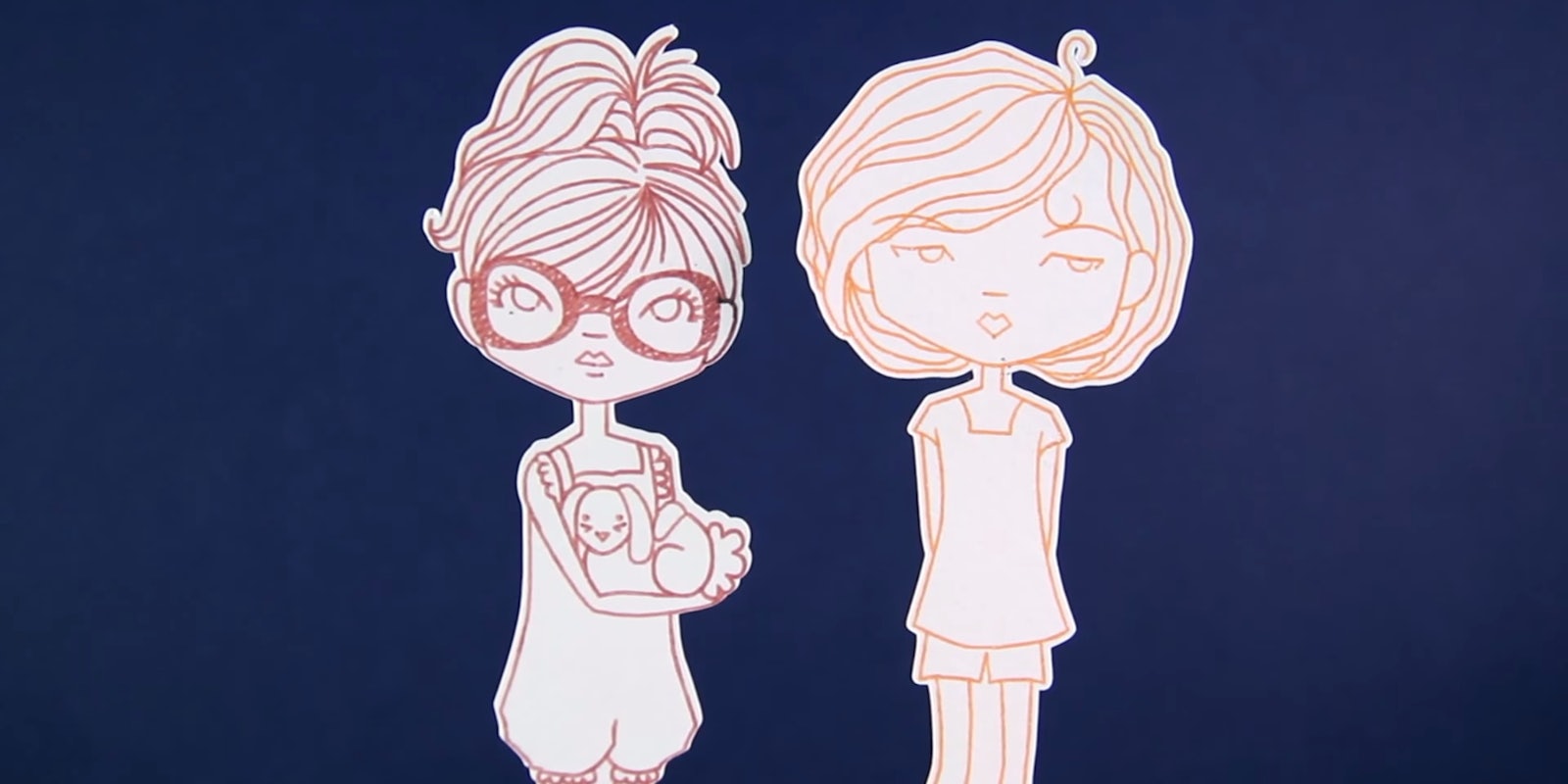Don’t lie. The minute you passed your last high school science exam, you kissed those beakers goodbye, burned your textbook in the nearest trash can, and swore you’d never return. And while I respect the intentions of your 18-year-old self, it’s time to give science another shot, and here’s why: BrainCraft, the craftiest science show on YouTube, is here to answer all your questions about why humans are the way they are.
BrainCraft was started by science educator Vanessa Hill in late 2013. Hill first began working in science education after landing a job with Australia’s National Science Agency. Following the completion of her master’s degree, she started making YouTube videos to mesh together her passions of science and art.
“What I’m trying to do is communicate science in creative ways,” shares Hill. “To just do something different that’s not a talking head and is a little bit crafty. I’m trying to work on it so it has a beautiful aesthetic and people want to watch it. It looks cool, and they learn bits of science along the way.”
While there are hundreds of amazing education channels on YouTube, Hill has made BrainCraft stand out from the pack by presenting her scientific explainers in the form of stop-motion paper animations. The result is a lesson that is both memorable and relatable. In her bimonthly videos, Hill explores psychology, neuroscience, and the way humans act in situations, resulting in videos on everything from technology ruining relationships to the psychology of trolls. With years of classroom experience under her belt, Hill sees the YouTube platform as a major educational tool.
“It’s a platform to reach more people and reach them in a different way when they’re in a different frame of mind,” Hill explains. “I’ve done videos on reading and knitting and sports and exercise, and you do see those niche groups sharing [the videos]. I think that’s a really good way to reach new people who wouldn’t normally watch science content online. That’s a good environment to learn in: when they aren’t expecting it.”
In her first few months on YouTube, Hill’s work was quickly acknowledged by science heavyweights like Emily Graslie and earned her a coveted position signed with PBS Digital Studios. This opportunity has allowed Hill to move to New York City and pursue YouTube full-time. If it were up to her, Hill says she would make all her videos about her dog, memory, and moral dilemmas, but she quickly acknowledges the need for science channels to balance their libraries between fun, shareable content and scientifically dense topics.
“The challenge from a content point of view [is] creating something that makes sense and is coherent in three minutes,” Hill shares. “It’s really hard to strike that balance between what pleases the public and what pleases the professionals. It’s hard to include a lot of science that’s rigorous and entertaining in that time period as well.”
But not everyone’s happy. In many of the comment sections on her videos, Hill notes the repetition of people attacking her videos as being opinions instead of fact. The trolls spend so much time trying to discredit each of Hill’s stated points, they forget to click on the resources and links she’s provided in the description. Meanwhile, Hill has to find the right balance of ignoring, responding, and calling out this harassment in her comments. Through it all, she keeps a good attitude, joking that she learned five new words from Urban Dictionary that she’d never heard before reading her comments. As her channel is still incredibly new, Hill acknowledges she has yet to build the loyal audience to help her fend off the trolls.
“There are a lot of other educational channels, but a lot of them—Minute Physics, Minute Earth, Veritasium, Smarter Everyday—they’ve all been around for a couple years, and they have this whole in-group that you’re not a part of because you’re a new creator,” comments Hill. “Sometimes it’s hard finding your audience, that community on YouTube, and then also finding a community of creators that you can kind of fit in with and talk [with] about things.”
True, signing with PBS Digital has presented Hill with an established support system, but even this cannot fully alleviate the challenges of being a new creator—especially a new female creator running a STEM (that is, science, technology, engineering, and mathematics) channel on YouTube. Though YouTube has allowed women an unprecedented opportunity to pursue their scientific passions, it has yet to alleviate the sexism and harassment typical in these male-dominated fields. While there are many incredible education channels on YouTube, the female-run channels are less well-known and often discouraged from continued production by hateful comments.
“I think in general, offline and online, it’s really the support of men that will change things,” comments Hill. “I think it’s really, really important for women to keep talking about it and to keep talking to men and women about it. But I think the people who need to change, they’re not really going to listen to what women have to say. I think it has to come from men and authority figures in order for people to change their behavior.”
Hill is not letting negative comments deter her from putting out content that she loves making. And when she isn’t spending weeks on end in research mode and finally has a spare moment, this is exactly where you’ll find her.
“When I’m not on the Internet? I’ll take you through step by step because I feel as though this is important,” Hill laughs. “I’d definitely go out for brunch because it’s my favorite meal of the day. I’d probably have a lot of coffee, and I’d take my dog to the beach, and we would have a run around and we would play volleyball and probably have tacos at the end of the day.”
A woman after the world’s heart. Maybe next up should be the science of our love of tacos.
Screengrab via BrainCraft/YouTube


